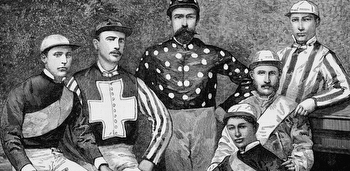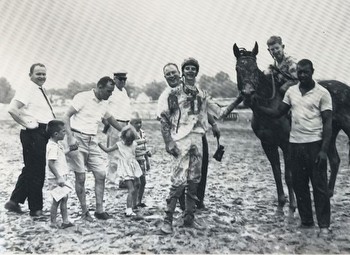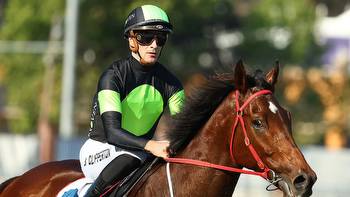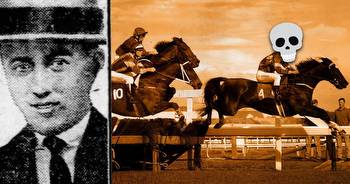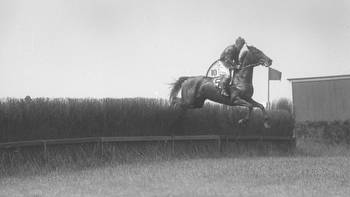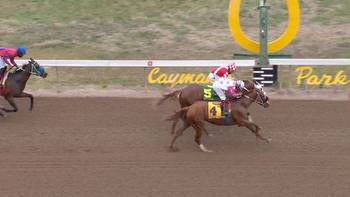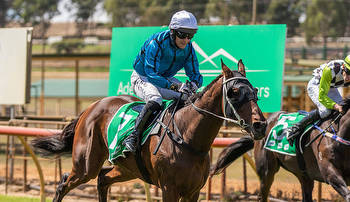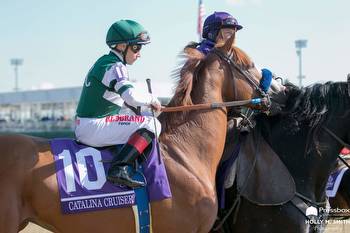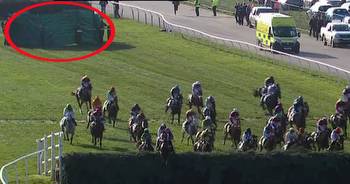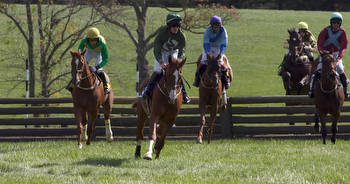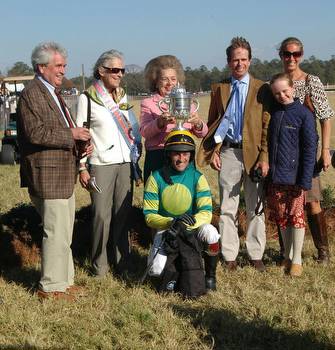Tall Tales of the Track: Death Rides Along
The sport of horse racing is awash in stories. From the race caller standing high above the action to the backstretch workers at the ground level of it all, every person you meet at the racetrack has a yarn to share. Some are built on fact and others sound like the stuff of legend, surely fiction until you dive deeper, like the story of the jockey who died in the middle of the race.
Did that really happen? How is that even possible? Learn more about this tall tale and the truth behind it.
Determined Dreamer
Young Frank Hayes had been around the racetrack since his arrival from Ireland in 1916. His parents had emigrated to America when he was only two, leaving Frank to be raised by his grandmother in County Limerick. When England passed the Conscription Act in January 1916, the young man left Ireland to join his family in America in order to avoid the draft and the terrible fighting of World War I. He joined his family in New York, going to work in a silverware factory. But in his heart was a love of horses.
Frank had ambitions of becoming a jockey as a child, contrary to his mother’s wishes. He quit the silverware factory for the chance to work for steeplechase trainer James K. Frayling. On the backside caring for Frayling’s string, the quiet young man had found his place. He rose early and galloped and cared for the horses in his charge, hoping to have a chance in the saddle one day. In June 1923, the trainer needed a rider for the mare Sweet Kiss in a two-mile chase over 12 fences. Knowing that Hayes wanted his shot in the saddle, Frayling conscripted the young man to ride. This was Frank Hayes’ shot.
Dire Consequences
The only problem was Frank was not quite ready to meet the 130-pound impost assigned to Sweet Kiss. He needed to shed a few pounds to prepare for his chance to ride, and he needed to do it fast. As a new rider with a 10-pound allowance, his 142-pound frame would need to lose more than 10 pounds to be ready for his big chance. Over the hours leading up to the second race at Belmont Park on June 4, Frank worked hard to shed the excess weight. Riders would withhold water or food, exercise continuously, or sweat off the pounds in front of a fire or in a hot box. Hayes was determined to take advantage of this opportunity. Undaunted by the task at hand, he arrived in the jockey’s room at Belmont the right weight for the big moment. He donned the blue and yellow silks and met Frayling in the paddock.
The trainer boosted Hayes into Sweet Kiss’s saddle and the pair trotted out to the steeplechase course in the track’s infield. Ahead of them were 12 fences over slick ground, wet from the previous day’s rains. Sweet Kiss lined up with four others, including the favorite, Gimme. The flag dropped and the five were on their way, with Gimme leading the way. Hayes kept Sweet Kiss a length off the favorite, clearing each fence while waiting for his chance to take the lead. For nearly four minutes, horse and rider worked as a team, Hayes sensing his chance to send Sweet Kiss to the lead as they approached the final fence.
The mare cleared the fence successfully, but spectators noticed something odd as she galloped to the finish a length and a half ahead of Gimme. Hayes swayed in the saddle in those final yards, righting his seat just in time to cross the finish line in first. A hundred yards beyond the wire, the rider slipped motionless from the saddle to the ground. Realizing that her jockey had fallen, Sweet Kiss wheeled back to check on the fallen man, nuzzling the still form as men rushed to his aid.
Dr. John E. Voorhees, Belmont’s physician, reached the young man and was shocked by what he found: Frank Hayes was dead.
Mysterious Finale
How did this happen? How could the young man start the four-minute race alive and then end it dead? When did he expire? And why? As the young Irishman’s loss cast a pall over the day’s racing, the reason behind his death seemed obvious: heart failure. Trainer Frayling knew that his employee’s physique had carried more weight than the 130-pound impost levied on Sweet Kiss. Familiar with the methods jockeys used to make weight and lacking the diagnostic tools that 21st century physicians have, all Voorhees could conclude was that Hayes’ body could not handle the added exertion of riding the demanding race after the extreme measures he had to use to take off the weight.
The funeral for young Frank Hayes was attended by his parents, three brothers, two sisters, and both James K. Frayling and his sister, Miss A. M. Frayling, in whose name Sweet Kiss raced. The unfortunate rider was buried in his winning silks and riding boots, an ode to the passion that the young Irishman felt for his chosen profession. Onlookers lined the streets as the funeral cortege made its way from St. Paul’s to Holy Cross Cemetery in Brooklyn. A lone photograph documented Hayes’ triumph in the saddle, an eerie record of one man’s final moments.
In the century since, Hayes’ story passed into legend, leaving those who hear of his sad story wondering if this tale of a man’s sudden death in his first ride is true. Though he was variously reported as being 22 and 25, the tale of the jockey who died in the saddle actually did happen, so much so that the band Driftmouth wrote a song about him:
Twenty-to-one, that’s long odds to run.
For a lifelong horse trainer
And an old stableman
On a mare they called Sweet Kiss
That never has won.
It’s the old steeplechase, come on son.


